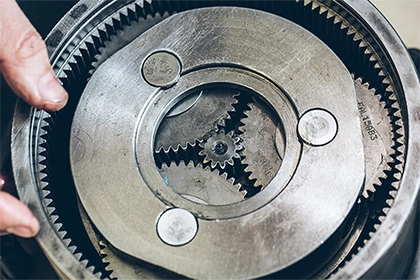
4 Ways of Controlling DC Motors
In this article, we will explore four common methods of controlling DC motors, each offering unique advantages and applications.
DC motors are widely used in various industries and applications, from robotics to automotive systems. To harness the full potential of these motors, it is essential to have precise control over their speed, direction, and torque. In this article, we will explore four common methods of controlling DC motors, each offering unique advantages and applications. By understanding these control techniques, you can optimize the performance of DC Motor for your specific needs.
1. On-Off Control
The simplest and most basic method of controlling a DC motor is through on-off control. This technique involves turning the motor on or off to control its operation. When the motor is turned on, it rotates at its maximum speed, and when it is turned off, it stops completely.
On-off control is commonly used in applications where precise speed control is not required, such as simple household appliances like fans or pumps. However, this method lacks the ability to regulate motor speed or direction, making it unsuitable for more sophisticated applications.
2. Pulse Width Modulation (PWM)
Pulse Width Modulation (PWM) is a widely used technique for controlling the speed of DC motors. PWM works by rapidly switching the motor's power supply on and off at a fixed frequency, while varying the duty cycle or the ratio of on-time to off-time.
By adjusting the duty cycle, the average voltage supplied to the motor can be controlled, effectively regulating its speed. A higher duty cycle results in a higher average voltage and faster motor speed, while a lower duty cycle reduces the average voltage, slowing down the motor.
PWM control offers precise speed regulation, low power consumption, and reduced motor heating. It is commonly used in applications such as robotics, drones, and electric vehicles, where fine-tuning motor speed is crucial.
3. Variable Voltage Control
Another method of controlling DC motors is by varying the voltage supplied to them. By adjusting the voltage, the motor's speed and torque can be regulated.
Variable voltage control can be achieved using techniques such as analog control or using a variable voltage regulator. Analog control involves using potentiometers or rheostats to manually adjust the voltage, while a variable voltage regulator allows for automated control.
This method is suitable for applications where speed control is essential but precise control is not a requirement. It is commonly used in applications like conveyor systems, where varying the speed of the motor is necessary based on the workload.
4. H-Bridge Control
H-Bridge control is a more advanced technique used to control the direction of rotation of a DC motor. It involves using a configuration of electronic switches, typically transistors, to control the flow of current through the motor windings.
By controlling the switching states of the transistors, the current can be directed through the motor in different directions, enabling bidirectional control. This allows the motor to rotate forward, reverse, or stop, depending on the desired direction of rotation.
H-Bridge control is commonly used in applications such as robotics, electric vehicles, and industrial automation, where precise control over motor direction is required.
Conclusion
Controlling DC motors is crucial for optimizing their performance and adapting them to various applications. The four methods discussed in this article, namely on-off control, PWM control, variable voltage control, and H-Bridge control, offer different levels of precision and flexibility in controlling DC motors.
While on-off control is simple and suitable for basic applications, PWM control provides precise speed regulation. Variable voltage control allows for adjustable motor speed without fine-tuning, and H-Bridge control offers bidirectional motor control.
By understanding these control methods, you can choose the most appropriate technique for your specific application, ensuring optimal performance and efficiency of your DC motors.



Leave a Comment